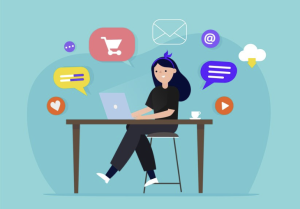Introduction to India’s Consumer Affluence
India, with its rapidly growing economy and a population of over 1.4 billion, has seen a substantial increase in consumer affluence over the past few decades. This affluence is driven by a burgeoning middle class, technological advancements, and urbanization. As a result, understanding the dynamics of consumer affluence in India is crucial for businesses and investors aiming to tap into this lucrative market.
The Rise of the Indian Middle Class
One of the most significant contributors to India’s consumer affluence is the expanding middle class. According to various studies, the middle class in India is expected to constitute nearly 40% of the population by 2025. This growth is fueled by increasing income levels, better educational opportunities, and greater access to credit.
Income Growth and Distribution
India’s income distribution has been shifting, with more households moving from lower-income brackets to middle and upper-middle-income brackets. This shift is a result of economic reforms, liberalization, and the IT boom that has created numerous high-paying jobs. Furthermore, sectors such as manufacturing, services, and real estate have also contributed to this upward mobility.
Urbanization and its Impact
Urbanization is another critical factor in the rise of consumer affluence. Cities like Mumbai, Delhi, and Bangalore are becoming economic powerhouses, attracting talent and investments. Urban areas offer better infrastructure, job opportunities, and lifestyles, making them attractive destinations for individuals seeking upward mobility.
Technological Advancements Driving Consumer Behavior
Technology has revolutionized consumer behavior in India. The widespread adoption of smartphones, internet penetration, and digital payments have transformed the way consumers shop, communicate, and entertain themselves.
E-commerce Boom
E-commerce in India has seen exponential growth, with platforms like Amazon, Flipkart, and Reliance Digital leading the charge. Online shopping provides consumers with a vast array of choices, competitive pricing, and the convenience of home delivery. The COVID-19 pandemic further accelerated this trend, making e-commerce an integral part of Indian consumers’ lives.
Digital Payments and Fintech Innovations
The adoption of digital payments has been a game-changer for the Indian economy. Platforms such as Paytm, Google Pay, and PhonePe have made transactions seamless and secure, fostering a cashless economy. Additionally, fintech innovations like microloans and digital wallets have increased financial inclusion, enabling more people to participate in the economic mainstream.
Also Read: Latest Consumer Data Trends in 2024
With rising affluence, Indian consumers are becoming more discerning and aspirational. Their preferences are evolving, reflecting a desire for better quality, branded products, and personalized experiences.
Health and Wellness
There is a growing awareness of health and wellness among Indian consumers. This trend is evident in the increased demand for organic foods, fitness equipment, and wellness services. Brands that cater to these needs are witnessing significant growth.
Travel and Leisure
Rising incomes and a desire for new experiences have led to a boom in the travel and leisure industry. Domestic and international travel have become more accessible, with consumers willing to spend on luxury resorts, adventure sports, and cultural experiences.
Luxury Goods and Services
Affluent consumers are driving demand for luxury goods and services. Brands like Gucci, Louis Vuitton, and Rolex have established a strong presence in India, catering to the growing appetite for premium products. Additionally, the market for high-end automobiles, real estate, and fine dining is also expanding.

Impact on Various Sectors
The rise in consumer affluence has a ripple effect across various sectors of the Indian economy. Understanding these impacts is crucial for businesses looking to capitalize on this growth.
Retail Sector
The retail sector is experiencing a transformation with the advent of organized retail and shopping malls. Consumers are looking for enhanced shopping experiences, which has led to the growth of multi-brand outlets and specialized stores.
Automotive Industry
The automotive industry is benefiting from increased consumer affluence. There is a growing demand for personal vehicles, particularly in the premium segment. Electric vehicles (EVs) are also gaining traction, driven by environmental awareness and government incentives.
Real Estate
Real estate, particularly in urban areas, is witnessing a surge in demand. Consumers are investing in luxury apartments, gated communities, and second homes. The desire for better living standards and security is driving this trend.
Challenges and Opportunities
While consumer affluence in India presents numerous opportunities, it also comes with its set of challenges. Businesses need to navigate these challenges to effectively tap into the market.
Challenges
- Income Disparity: Despite the rise in affluence, there is still a significant income disparity in India. Businesses need to cater to diverse economic segments to achieve widespread success.
- Infrastructure Development: Rapid urbanization has put pressure on infrastructure. Addressing issues like traffic congestion, pollution, and housing shortages is essential for sustainable growth.
- Regulatory Environment: Navigating India’s complex regulatory environment can be challenging for businesses. Compliance with laws and regulations requires careful planning and execution.
Opportunities
- Innovation and Technology: Leveraging technology to create innovative products and services can provide a competitive edge. Businesses that invest in R&D and digital transformation are likely to succeed.
- Localization: Understanding and catering to local preferences is crucial. Customizing products and marketing strategies to align with regional tastes can drive brand loyalty and sales.
- Sustainability: With growing environmental awareness, there is an opportunity for businesses to adopt sustainable practices. Offering eco-friendly products and services can attract environmentally conscious consumers.
Also Read: Comprehensive Guide to Customer Risk Assessment
Conclusion
India’s consumer affluence is a dynamic and multifaceted phenomenon, driven by economic growth, technological advancements, and changing lifestyles. For businesses and investors, this presents a wealth of opportunities, provided they can navigate the associated challenges. By understanding the nuances of consumer behavior and leveraging technological innovations, businesses can effectively tap into this burgeoning market.



